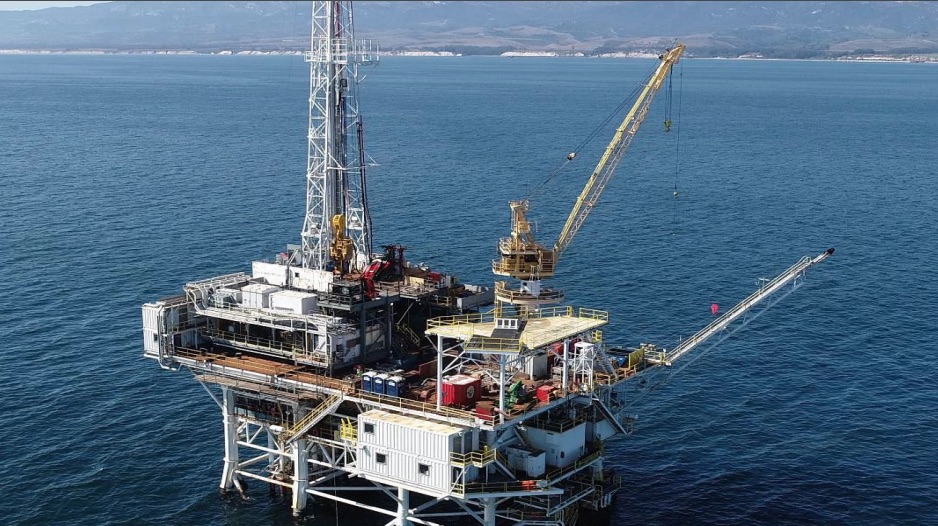Platform Holly Plugs First Well
State Lands Commission Holds Update on Progress

Over the angry lamentations of the Santa Barbara community, offshore oil platforms began to go up in the ’60s, a dangerous blight on the seascape for residents — borne out by the massive ’69 spill — profitable for the fossil-fuel industry — until Venoco went bankrupt in 2016. Its Platform Holly in the Ellwood Field went dormant, quickly turning into a rusted hulk, which the State Lands Commission has been restoring in order to get the drill platform ready to close 30 well bores by pumping cement down them. But some see the rigs as an opportunity, not an eyesore. Original ideas of how to use the platforms comprised a part of the November 7 State Lands meeting on the decommissioning.
As part of Venoco’s shutdown, caused in part by the Refugio Oil Spill and the closure of the oil pipeline, the company quitclaimed Holly to State Lands, saddling the state with the costs of removing the wells, estimated to be in the neighborhood of $348 million. Venoco’s bond amount posted against such an eventuality was $22 million. ExxonMobil is handling the overall decommissioning, with daily operations in the hands of contractor Beacon West. As well, State Lands has been quietly talking with members of Chumash tribes, because Piers 421, a part of the Ellwood field that sits below the Sandpiper Golf Course cliffs, lies close to cultural sites.
On Halloween, they closed the first well on Holly, said Jeff Planck, minerals manager for the agency. The state staff has become accustomed to the Goleta meetings; this was the fifth, he said. Planck described Holly as a rustbucket, saying it has taken 15,000 manhours to replace equipment on the platform and get it working again. Shutting down the well involved using a “coil tubing unit” to push cement into the well at the production level, then more cement was fed by gravity into the interval between the Monterey oil-bearing strata up to the sea floor. Even the cook could call a halt to the operation if something dangerous is spotted, Planck said, as he emphasized the safety rules on the platform.
As for Piers 421, a pair of wells on the beach near Haskell’s, abandonment was completed. Some oil had leaked in May, but the subsequent work showed no more leaking. After cementing, even trickles of water ceased, Planck said. The wells continued to show no pressure, an issue Venoco had once argued in favor of resuming production at the wells.
In previous meetings, proponents of wind energy had talked enthusiastically of the platforms as ripe for use. This time, mariculture growers cited the protein content of scallops, periwinkles, barnacles, and kelp below the surface. Not only that, but liquified seaweed, sent ashore via preexisting pipes, was useful as fuel, fertilizer, and in cosmetics, Rae Fuhrman proposed.
Another public speaker asked the State Lands Commission to consider the possibilities of lightning. Ryan Davis, who described himself as a former researcher in marine and planetary systems, noted that platforms drew a charge by the very nature of their tall features. The energy from lightning strikes, he said, could be used to create clean energy. Though Santa Barbara didn’t have many lightning strikes, he said, Platform Holly was a chance for a Project First Light proof-of-concept experiment. “Through a metamorphosis, the old infrastructure could change the world and help fight global warming,” he said.
As she had to all comers, State Lands Executive officer Jennifer Lucchesi told him that her agency welcomed ideas and would begin the scoping work — which included plenty of public meetings — on what to do with the remains of Platform Holly by the end of 2020 or beginning of 2021.



